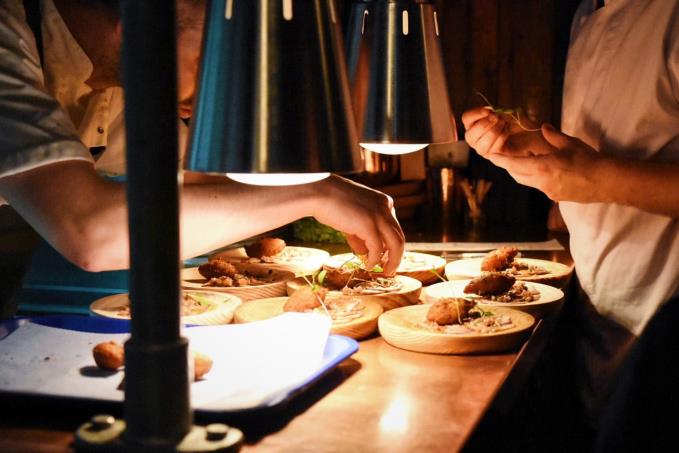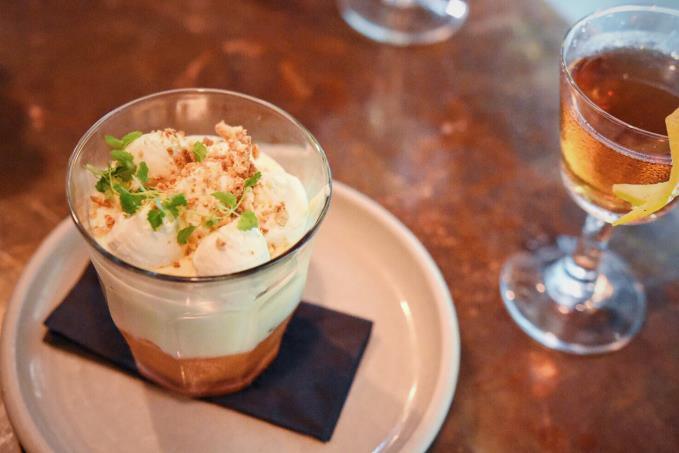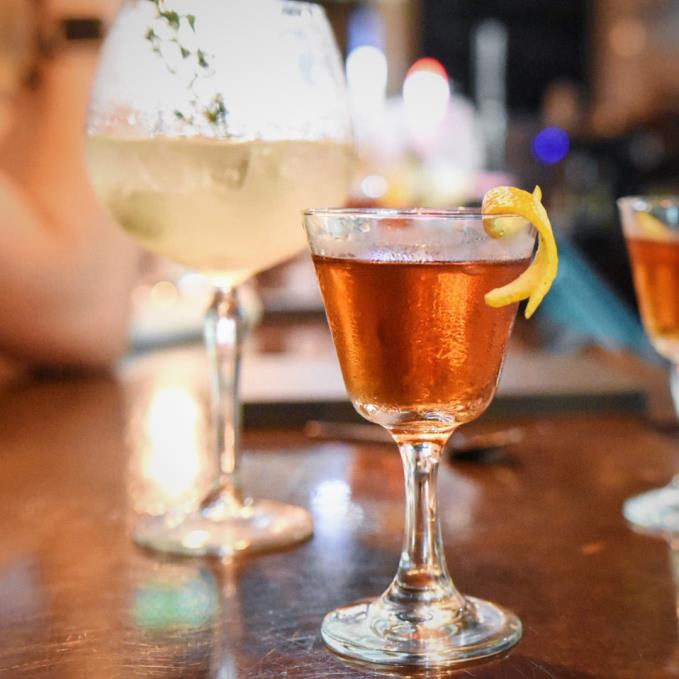“WINE HAS had a stranglehold on food-pairing for too long” says Jared Brown, award-winning writer, drink historian, and master distiller at Sipsmith, the independent London distillery founded in 2009.
People started distilling in pursuit of the elixir of life - and in a way, they found it.
He’s addressing the crowd gathered at a special dinner, pairing food from Greg Lewis’ Pintura kitchen with cocktails and serves featuring Sipsmith drinks in their starring role, crafted by the restaurant’s head bartender Lawrence Woodrow-Smith

With the demeanor of Jeff Bridges in The Big Lebowski and the compelling intensity of Jeff Daniels in The Newsroom, Brown has no trouble beguiling the audience with a brief history of gin as England’s signature spirit. He explained that the spirit was produced in one in every four London buildings at the height of its 19th-century popularity, before plummeting to just one in the whole city.
The menu itself used drinks to both compliment and contrast the food on offer. Sipsmith overproof with lime juice, juniper syrup and cava accompanied Carpaccio of charred lamb with anchovy dressing, crab fritter and finger lime (“Contrasting cava with fatty, salty, umami anchovy is genius - reminiscent of the scene in The Seven Year Itch where Marilyn Monroe pairs Champagne with crisps” in Jared’s words).
 "Phenomenal Surf & Turf" - Venison with Lobster Croquette
"Phenomenal Surf & Turf" - Venison with Lobster Croquette
A goblet of gin with lemon tonic, fino sherry, and thyme complemented venison with lobster and a Thermidor croquette - a phenomenal take on surf & turf - and finally a herbal, almost medicinal mixture of gin, sloe gin, orange bitters and sweet vermouth served as an aperitif along with the almond & blood orange variant on the classic trifle.
After dinner, we chatted with Jared over some more drinks.
 Almond & Blood Orange Trifle
Almond & Blood Orange Trifle
Ever since gin’s relatively recent resurgence of popularity, food & drink writers have been rushing to name various drinks “this year’s gin” every year, but nothing quite has. Why do you think that is?
Lots of brands attempt to promote whatever spirit they produce as “the new gin”, and occasionally they see some success, but it’s all marketing. Once the advertising money runs out, the popularity quietens down. There are lots of other, wonderful drinks - let’s say Mezcal for example - that are excellent in particular drinks, or for particular occasions, but gin has more versatility. There’s also so much heritage and history attached to the drink, especially in England.
One thing that struck me during your introduction was the statistic about one in four London properties operating a still...
That’s right, and that gradually went down to just one in the whole city - James Burroughs Company, whose flagship product was what we still know as Beefeater London Dry Gin
Is that one you’d personally drink?
Absolutely, it’s a great, bold gin! The same with Tanqueray - if it wasn’t for them, we wouldn’t be sat here drinking Sipsmith right now (he gestures towards our glasses - a couple of minutes ago he’d asked the barman for a 50/50 mixture of Sipsmith VJOP and Lacuesta vermouth reserva. “turn and burn” the orange peel, and sevre without a garnish. Bowing to his superior knowledge and experience, I ask for “um, same please”).
In your work as a drinks historian, do you find it difficult to discover new things with information more freely available? How do you keep making new discoveries?
I subscribe to every paid and free archive of newspapers, journals, documents, you name it. You have to be creative and imaginative with what you search for. Just the other day while I was on a train though, I discovered a document that predates the first mention of a [very famous cocktail, we’ll leave it up to Jared to disclose that in one of his books] by twenty or thirty years.
In your search for knowledge, you must uncover some pretty interesting news stories aside from drinks?
Oh sure - one newspaper from Paris in the mid-1800s featured a story about a very well known and respected ballet dancer had started giving dance lessons to a local goose! We could write a whole book of the curious stories we’ve found.
How did the act of distilling alcohol initially come about?
People started distilling in pursuit of the elixir of life - and in a way, they found it. If you consider how unsanitary sources of water were in the past, distilling alcohol would actually sterilise the disease-ridden water, and make people more healthy. Hence so many gin distilleries in Regency-era London.
So why did that particular boom end?
Queen Victoria ended the distilling boom - not just because of strict morality, but because of the social reform and progress that happened under her reign. People didn’t need to drink because their lives were less miserable than before.
Do you think that goes some way to explaining why the drink has become more popular again recently?...
Maybe! I guess that’s the good thing about being in distilling, though - when people are sad, they drink. When the sad times have gone and it's time to celebrate, they drink again!



